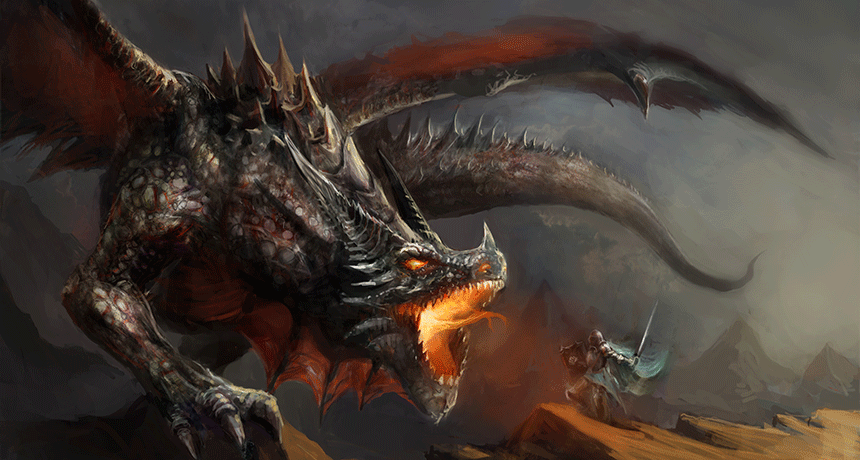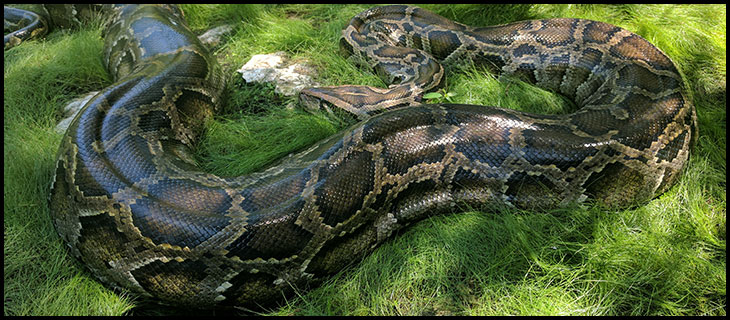What is Biodiversity?
A tropical rainforest is an ecosystem with a lot of biodiversity.
A coral reef is another ecosystem with a lot of biodiversity.

Deserts are ecosystems with a lot of biodiversities, but not as much as rainforests and coral reefs.

A Walmart parking lot has little biodiversity. 
This is Chad. 
So, what is biodiversity?
Well, let’s break down the word into its prefix and root word. The prefix bio- means life, and the root diversity describes a wide variety of different things. Put them together, and you get “lots of different types of life.” Therefore, biodiversity refers to the variety and stability of populations within an ecosystem. In other words, ecosystems with greater biodiversity:
- have a greater variety of species (populations).
- are more stable.
Diversity is a good thing, whether discussing the different species on Earth or the different races and cultures within society. Diversity enriches society, making the bonds between cultures stronger and the lives of all better. The same applies to ecosystems. More biodiverse ecosystems thrive and remain fairly stable, while low biodiverse ecosystems are less stable. Therefore, biodiversity is essential for the health and longevity of an ecosystem.
Calculating Biodiversity
Do you know what would help you better understand biodiversity?
No. Math.
I’d prefer Batman.
Alright. How about the George Clooney Batman?
Oh, heck no. Math is much, much better.
That’s what I thought. Multiple formulas calculate biodiversity. However, we are going to use the least complex formula. Let’s define some variables:
- D = The biodiversity of an ecosystem; ranges from 0 (least diverse) to 1.0 (greatest diversity)
- N = Total number of all organisms being studied in an ecosystem
- n = Number of individuals in a single population
- Σ = The sum of something (it looks scary but its just addition)
Here’s the biodiversity index formula:
D = 1\:-\sum\left(\frac{n}{N}\right)^2Now let’s do an example:
The tables below show two different ecosystems with the same bird species. You want to know which ecosystem has the greater biodiversity of bird species.
Ecosystem #1
| Bird Species | Number of Birds in the Ecosystem |
|---|---|
| Blue Bird | n=15 |
| Red Bird | n=7 |
| Green Bird | n=6 |
| Total Number of Birds | N=28 |
Ecosystem #2
| Bird Species | Number of Birds in the Ecosystem |
|---|---|
| Blue Bird | n=10 |
| Red Bird | n=9 |
| Green Bird | n=2 |
| Total Number of Birds | N=21 |
Ecosystem #1
D = 1-\left[\left(\frac{15}{28}\right)^2 + \left(\frac{7}{28}\right)^2 + \left(\frac{6}{28}\right)^2\right]D = 1-\left[0.29 + 0.06 + 0.05\right]
D = 1-0.4
D = 0.60
Ecosystem #2
D = 1-\left[\left(\frac{10}{21}\right)^2 + \left(\frac{9}{21}\right)^2 + \left(\frac{2}{21}\right)^2\right]D = 1-\left[0.23 + 0.18 + 0.01\right]
D = 1 - 0.42
D = 0.58
Ecosystem #1 has a biodiversity index of 0.60 and Ecosystem #2’s biodiversity index is 0.58. Since Ecosystem #1 biodiversity index is closer to 1.0, it has a slightly more biodiverse bird community than Ecosystem #2. (Click here if you want a more detailed description of the biodiversity index.)
Factors That Affect Biodiversity
In this chapter, we will focus on the following three factors that affect the biodiversity of an ecosystem:
- Keystone species
- Invasive species
- Human disturbances
Keystone Species
Keystone species are populations that maintain the biodiversity of an ecosystem. They are like the fourth leg of a chair. The chair with the fourth leg remains stable, but take it away, and the chair loses its stability. Keystone species are usually apex predators because they keep the food chain in check. Lions of the African savanna are examples of keystone species, as explained in the documentary below.
The California mountain lion is also a keystone species, as described in the figure below.

However, one of the best examples of a keystone species is the wolves that call Yellowstone National Park home. By 1926, wolves were completely eradicated from Yellowstone and remained absent for 70 years. In 1995, a small pack of wolves was released into Yellowstone. Within a few years, the wolves’ behavior led to profound changes in Yellowstone’s abiotic and biotic factors. The amount of biodiversity on land increased substantially, and the rivers and lakes became clearer, increasing the aquatic biodiversity. In less than a decade after the reintroduction of wolves, Yellowstone’s ecosystems became more diverse and stable.
Now, let’s use the biodiversity index formula to quantify a keystone species’ effect on biodiversity.
No.

Alright!!!!! Please remove that image!!!!!
I knew you’d come around.
That was mean.
Yes, but the Clooney Batman is a great motivator.
I think my retinas melted.
Well, here’s your remedy:

| Organism | Ecosystem Without Otters | Ecosystem With Otters |
|---|---|---|
| Otters | n=0 | n=2 |
| Eelgrass | n=3 | n=58 |
| Crabs | n=21 | n=4 |
| Fish | n=3 | n=15 |
| Slugs | n=0 | n=20 |
| Total Number of Organisms | N=27 | N=99 |
Ecosystem Without Otters
D = 1-\left[\left(\frac{0}{27}\right)^2 + \left(\frac{3}{27}\right)^2 + \left(\frac{21}{27}\right)^2 + \left(\frac{3}{27}\right)^2 + \left(\frac{0}{27}\right)^2\right]D = 1-\left[0.0 + 0.01 + 0.61 + 0.01 + 0.0\right]
D = 1- 0.63
D=0.37
Ecosystem With Otters
D = 1-\left[\left(\frac{2}{99}\right)^2 + \left(\frac{58}{99}\right)^2 + \left(\frac{4}{99}\right)^2 + \left(\frac{15}{99}\right)^2 + \left(\frac{20}{99}\right)^2\right]D = 1-\left[0.0004 + 0.34 + 0.002 + 0.02 + 0.04\right]
D = 1 - 0.40
D = 0.60
The ecosystem with the keystone species (otters) has a higher biodiversity index (0.60) than the ecosystem without otters (0.37). Therefore, removing the otters leads to a significant reduction in biodiversity.
Invasive Species
It’s the late 1990s, and a group of ninjas crosses a road to go hiking through the Florida Everglades.
Please tell me this isn’t one of your scientist road-crossing jokes.
No, it’s not. This story involves ninjas.
I stand corrected.
Anyway, the ninjas spot an alligator in the water and name him Phil. As they watch Phil swim through the water, something unbelievable happens. A large snake, which they name Barry, grabs Phil and pulls him under the water. Fifteen minutes pass, and Barry (the snake) drags Phil (the alligator) onto the shore and swallows him whole.
Burmese pythons are not native to the Everglades and are an invasive species. Invasive species are species introduced into an ecosystem and thrive within it. In the new environment, an invasive species can:
- Outcompete native species for resources.
- Reproduce rapidly.
- Have no natural predators.
The Burmese python is an apex predator that can lay up to 80 eggs annually. Before Burmese pythons reach their full size, they are prey to large cats, alligators, and birds of prey in their native habitat (Southeast Asia). However, in Florida, the Burmese python has fewer predators and reaches apex predator status at a younger age. Over the past two decades, the Burmese python’s presence has led to a decrease in the Florida Everglade’s biodiversity.

Your Hammer reference is 30 years late.
It’s never too late for Hammer.
| Organism | Everglades BEFORE the Introduction of the Burmese Python | Everglades AFTER the Introduction of the Burmese Python |
|---|---|---|
| Burmese Pythons | n=0 | n=6 |
| Alligators | n=15 | n=2 |
| Birds | n=56 | n=0 |
| Large Mammals | n=6 | n=0 |
| Small Mammals | n=80 | n=18 |
| Total Number of Organisms | N=157 | N=26 |
Everglades BEFORE the Introduction of the Burmese Python
D = 1-\left[\left(\frac{0}{157}\right)^2 + \left(\frac{15}{157}\right)^2 + \left(\frac{56}{157}\right)^2 + \left(\frac{6}{157}\right)^2 + \left(\frac{80}{157}\right)^2\right]D = 1-\left[0.0 + 0.01 + 0.13 + 0.002 + 0.26\right]
D = 1-0.40
D = 0.60
Everglades BEFORE the Introduction of the Burmese Python
D = 1-\left[\left(\frac{6}{26}\right)^2 + \left(\frac{2}{26}\right)^2 + \left(\frac{0}{26}\right)^2 + \left(\frac{0}{26}\right)^2 + \left(\frac{18}{26}\right)^2\right]D = 1-\left[0.05 + 0.01 + 0.0 + 0.0 + 0.48\right]
D = 1 - 0.54
D = 0.46
Before the introduction of the Burmese python, there were more populations and a biodiversity index of 0.60. Introducing the Burmese phyton decreased the number of populations and reduced the biodiversity index to 0.46. Therefore, the introduction of an invasive species decreases biodiversity.
Human Disturbances
As the human population grows, we require more of the Earth’s resources to survive. However, there is a finite number of resources on Earth. Therefore, when we gain a resource, we take it away from other species, decreasing biodiversity. Sometimes our impact on biodiversity is small, and sometimes it’s devastating. Below is a picture of a segment of rainforest in South America. Which side of the road do you think has more biodiversity?
The clearcutting of trees is an extreme example of the loss of biodiversity. As humans take more and more resources, the Earth’s biodiversity gets smaller and smaller. And the loss of biodiversity negatively affects all living species, including humans. All of our medicines come from a compound found in another species. If we cause the extinction of a species, we may be eliminating the cure to a disease. Also, as our expansion moves into the wild, we come in contact with more species, which means more new diseases will enter the human population – i.e., the likely origin of SARS-CoV-2 (the virus that causes COVID-19).


So, why did the scientist cross the . . .




